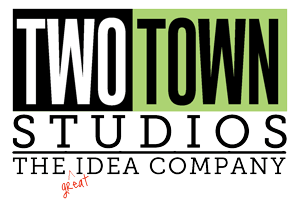License! Global
I did a question and answer interview with License! Global magazine recently but (as usual…) most of it ended up on the cutting room floor. Maybe I talk too much? What they published in the Licensing Expo Show Daily you can read here but the entire interview is below.
You’ve recently signed two new artists, Gayle Kabaker and Marianne Richmond. Can you tell me a little about their work and what sets it apart and where you think their licensing opportunities will be?
We’ve actually signed three new artists; David Wohlrab has also joined Two Town Studios. They have three very different styles – Gayle comes from a background in fashion and commercial illustration and has a very beautiful, soft contemporary look. David Wohlrab is more of a classic illustrator, highly skilled and has worked for years in 2D and 3D product design. Marianne Richmond began with a card line and built that into a successful career as a million-selling author, speaker and connection expert. All three have the knowledge and experience to create opportunities in a wide variety of categories, so right now we are not restricting our efforts for them to anything specific.
Can you tell me about the My Friend Ronnie™ property and some new licensing agreements with that property?
Ronnie Walter, the author and artist, developed the My Friend Ronnie ™ collection to help fill the need for a women’s humor property that is clever, funny and irreverent but not snide or mean spirited. Our first My Friend Ronnie license was a gift bag at Target about 5 years ago, and since then we have been adding partners whenever appropriate. In January we debuted a full line of giftware with Westland Giftware, a 100 sku signature card and gift stationery collection from Leanin’ Tree, and a line of decorative plaques with Enesco/Dept 56. We very recently signed an international partner who will be producing My Friend Ronnie products in the Netherlands.
Are there any particular artists or collections you’ll be highlighting at the SURTEX and Licensing Expo this year? What makes them stand out in the market?
We will not be exhibiting at Surtex this year for the first time in more than a decade but have expanded our presence at the Licensing Expo. We have a number of new and established properties that we will show there:
Real Women…Real Country ™ is a new humorous collection from Ronnie Walter aimed at the millions of women raising “crops, critters and kids” – whether in or out of the city – who have little time for spas, sports cars or tiny dogs that fit in their purse. It is clever and hip but with country pride – just like the 50 million women who live outside the major metros in the US. It has already been picked up for a 32 sku greeting card line.
Krista Hamrick’s “Name Above all Names” collection is unique in the marketplace – it is an illustrated alphabet of names for God, each with Scripture reference – and a beautiful work of art. It has been licensed for fabric, woven goods, canvas wall art and some personalized product, and has excellent potential for expansion into many more categories.
Artist and toy designer Betsy Veness has several new collections for toddler to tweens including Wee Tooters, Polk and Dottie and Don’t Cross Me which is a sassy tween girl property that will make you laugh out loud.
Have you signed any new licensing contracts recently or broken into any new product categories for the first time? Are there any particular categories you are interested in pursuing to a greater extent this year?
We maintain hundreds of active agreements and sign new ones almost every week, however we did get a couple of new categories recently. We are now on disposable trash bins and “edible greeting cards”, which are actually very tasty decorated cookies that are sent to people like cards. We would like to do much more work in the apparel categories and have recently partnered with a firm that has good connections in that business to market our properties to those manufacturers. Expanding our tabletop and home goods licenses is a goal – we have some penetration into those categories but would like to see more. We are also nibbling around the edges of the publishing and entertainment business to see if there is any way to transition some of our properties in those directions.
What are some retail chains your licensed products are being sold in? Any new retail outlets this year?
We have licensed product of some sort in every level of retail, and due to the number of licensees there is no sure way to track where all of it may be until we see the reports, and even then we won’t know who all of the end users are. In chains, I know as of today there is product in Target, Wal-Mart, Michaels, Lowes, Joanns, AC Moore, Archivers and Ace, we have a line widely distributed into drug and grocery so we are in many of those, and there are certainly more. We do have giftware going into Macy’s this fall and I believe that will be new location for us.
What product categories do you expect will be strong in 2010/2011? How do you think the business is shaping up?
Two big but very different questions. For us, I expect the social expression industry will stay strong along with message-based products, particularly those with connection messages. Techno-products, like ringtones and skins. And there are certainly a lot of babies out there, which may bode well for those categories that have tie-in to babies and moms. I always hesitate to predict what will be working next year – at least in writing – because it really is anyone’s guess.
Business is good, and I see that continuing. I do think, however, that we have to acknowledge the impact that technology is having on the art licensing business – it is changing virtually every aspect of our operation from how we represent the artists to how we show the designs, and to some degree it even affects what designs now work in the marketplace. Throw in the pressures of a troubled economy and the evolution of the retailer purchasing models and it becomes a very different business than it was just a couple of years ago.
Technology has also enabled the recent influx of hundreds of new artists who have heard about and want to “try” art licensing, but unfortunately this increase in artists is not matched by an increase in licensing opportunities, in fact it is quite the opposite. The result is that they are picking off the “low hanging fruit” – a card here, a gift bag there, maybe a run of fabric – and the cumulative effect is being felt by everyone in the business as the opportunities to license art become diluted by their sheer numbers.
Rather than sit back and watch, we are looking at how to adjust our strategy to take advantage of these changes, whether that’s guiding our artists toward more targeted collections, partnering with local experts in new categories and geographical areas, or by utilizing the amazing marketing reach that we can now access with the push of a keyboard button.
And then of course we need to be ready for all that to change again tomorrow…




